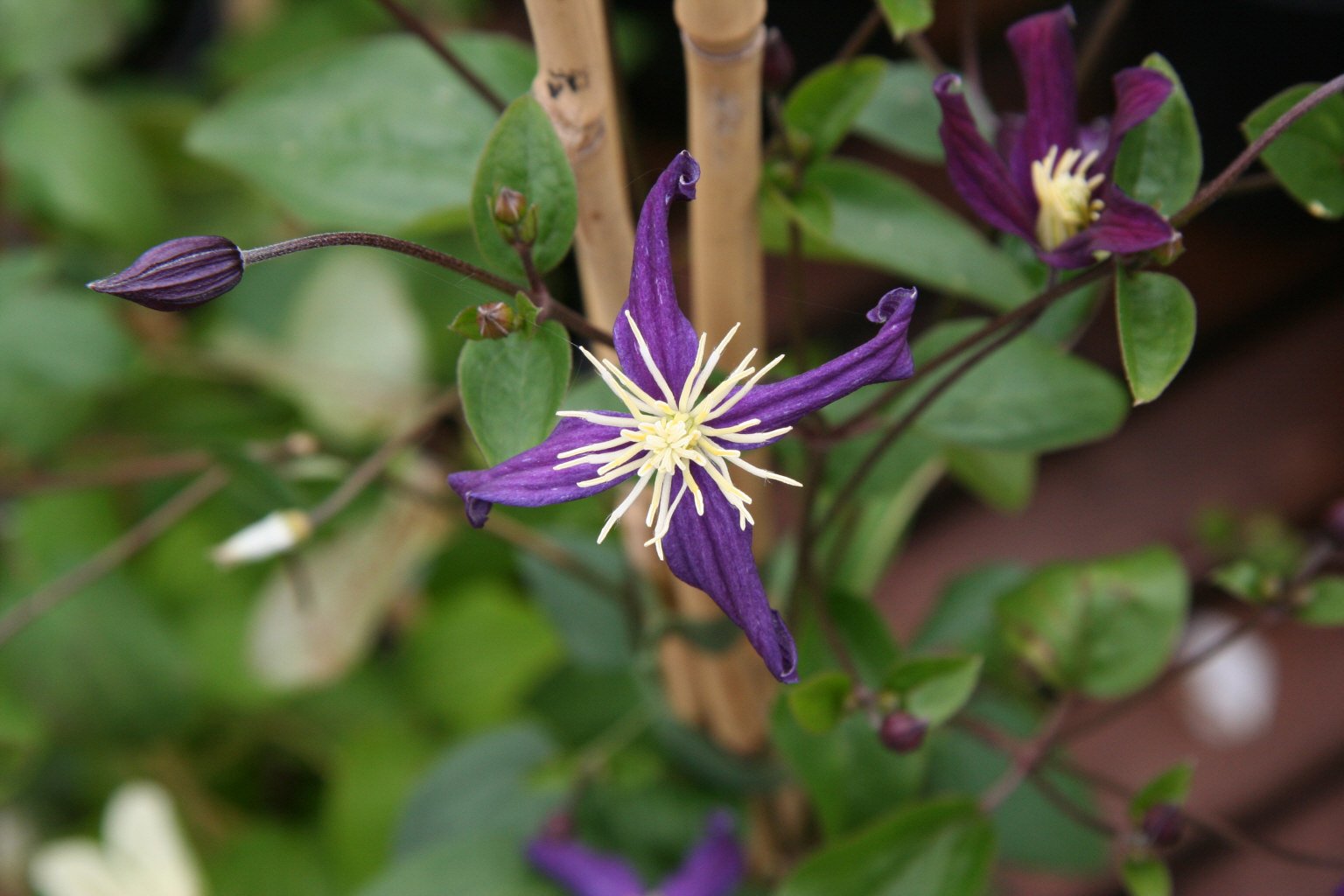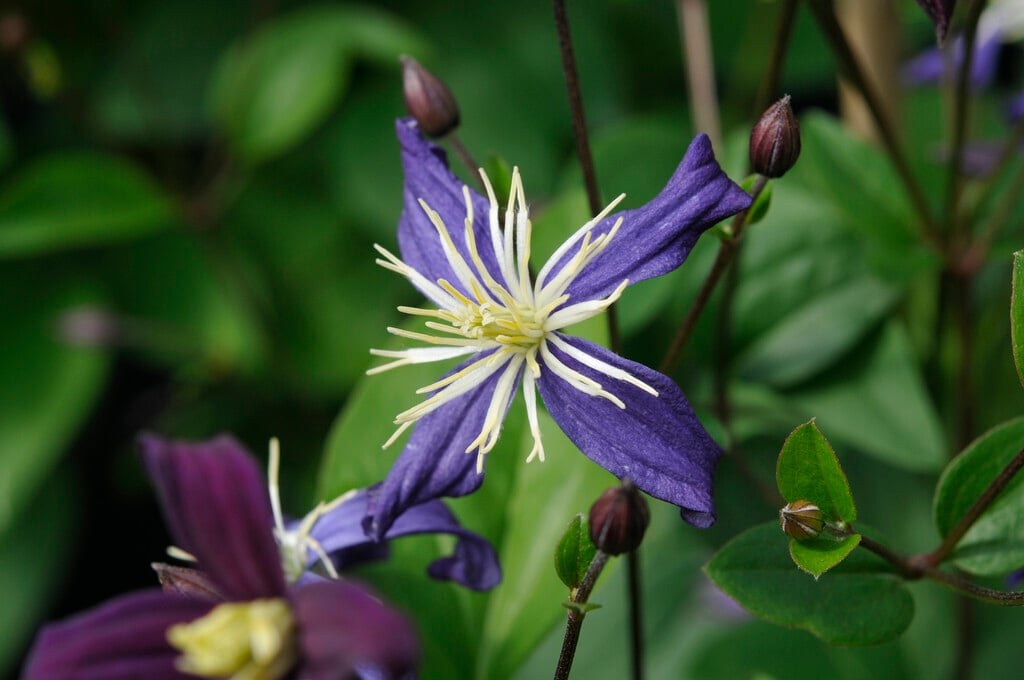Clematis caerulea var. odorata hort.
scented clematis
A non-clinging, woody-based herbaceous perennial to 2m tall, with divided leaves and large sprays of scented, small, single, deep violet flowers 4cm across with contrasting white stamens, the petals with edges rolled under as the flower matures, from early summer to mid autumn
Size
Ultimate height
1.5–2.5 metresTime to ultimate height
2–5 yearsUltimate spread
0.5–1 metresGrowing conditions
Moisture
Moist but well–drained, Well–drainedpH
Acid, Alkaline, NeutralColour & scent
| Stem | Flower | Foliage | Fruit | |
| Spring | Green | |||
|---|---|---|---|---|
| Summer | Purple | Green | ||
| Autumn | Purple | Green | ||
| Winter |
Position
- Full sun
- Partial shade
Aspect
South–facing or West–facing or North–facing or East–facing
Exposure
Sheltered Hardiness
H6Botanical details
- Family
- Ranunculaceae
- Native to GB / Ireland
- No
- Foliage
- Deciduous
- Habit
- Bushy
- Potentially harmful
- Skin irritant. Wear gloves and other protective equipment when handling. Pets (rabbits): Harmful if eaten. For further information and contact numbers regarding pets, see the HTA guide to potentially harmful plants
- Genus
Clematis can be deciduous or evergreen shrubs or herbaceous perennials, mostly climbing by twining leaf-stalks, and often with showy flowers. Some have attractive fluffy seedheads in autumn
- Name status
Correct
How to grow
Cultivation
Plant in a moisture-retentive, well-drained soil. Keep the base of the plant and roots cool and shaded by other plants or a layer of pebbles or flat stones at the base. Plant with the crown of the clematis at soil level. Mulch in late winter with garden compost or well-rotted manure, avoiding the immediate crown. Ideal for a border where it can be supported by other plants or useful groundcover. See clematis cultivation for more advice
Propagation
Divide or take basal cuttings of this semi-herbaceous species in spring or semi-ripe cuttings in early summer
Suggested planting locations and garden types
- Coastal
- Patio and container plants
- City and courtyard gardens
- Cottage and informal garden
- Flower borders and beds
Pruning
Pests
May be susceptible to aphids, snails and caterpillars; petals may be eaten by earwigs
Diseases
May be susceptible to honey fungus (rarely), clematis wilt and clematis slime flux
Love gardening
Sign up to receive regular gardening tips, inspiration, offers and more
View our Privacy Policy
Get involved
The Royal Horticultural Society is the UK’s leading gardening charity. We aim to enrich everyone’s life through plants, and make the UK a greener and more beautiful place.

